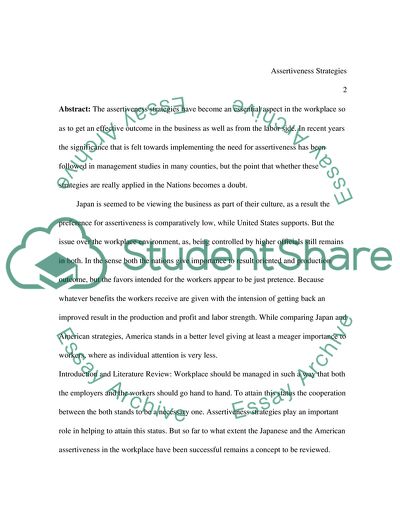Cite this document
(The American and Japanese Workplace Assertiveness Strategies Essay Example | Topics and Well Written Essays - 1500 words, n.d.)
The American and Japanese Workplace Assertiveness Strategies Essay Example | Topics and Well Written Essays - 1500 words. https://studentshare.org/human-resources/1704770-how-do-american-and-japanese-assertivness-strategies-differ-in-the-workplace
The American and Japanese Workplace Assertiveness Strategies Essay Example | Topics and Well Written Essays - 1500 words. https://studentshare.org/human-resources/1704770-how-do-american-and-japanese-assertivness-strategies-differ-in-the-workplace
(The American and Japanese Workplace Assertiveness Strategies Essay Example | Topics and Well Written Essays - 1500 Words)
The American and Japanese Workplace Assertiveness Strategies Essay Example | Topics and Well Written Essays - 1500 Words. https://studentshare.org/human-resources/1704770-how-do-american-and-japanese-assertivness-strategies-differ-in-the-workplace.
The American and Japanese Workplace Assertiveness Strategies Essay Example | Topics and Well Written Essays - 1500 Words. https://studentshare.org/human-resources/1704770-how-do-american-and-japanese-assertivness-strategies-differ-in-the-workplace.
“The American and Japanese Workplace Assertiveness Strategies Essay Example | Topics and Well Written Essays - 1500 Words”. https://studentshare.org/human-resources/1704770-how-do-american-and-japanese-assertivness-strategies-differ-in-the-workplace.


